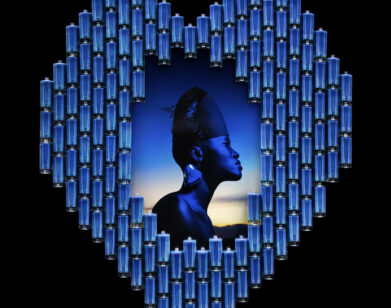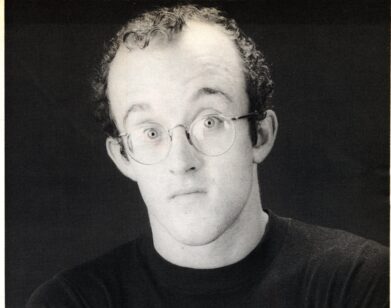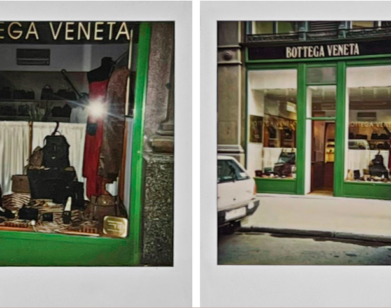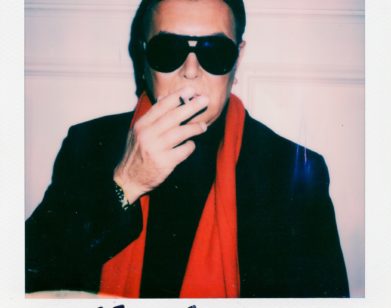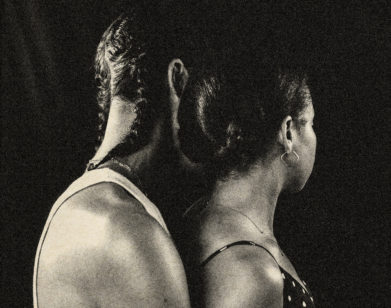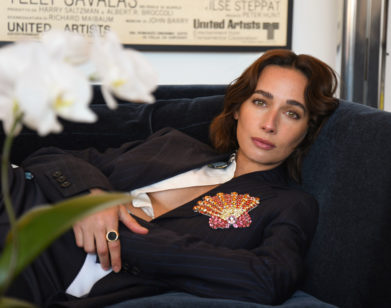Pat Cleveland Looks Back on her Glittery, Jet-Setting Alliance with Halston

1980, Halston & Pat Cleveland. Photographed by Dustin Pittman.
Few duos have rivaled the glittery alliance of Halston and Pat Cleveland. After all, Roy Halston Frowick—known to the world as simply “Halston”—was the designer who draped some of the world’s most iconic women in couture that could make you feel “like a Grecian goddess,” as Cleveland says. And during the designer’s heyday in the 70s and 80s, the supermodel was at the top of her game, regularly appearing on magazine covers (including the second ever issue of Interview) and traversing the globe with her fellow “Halstonettes,” among them Bianca Jagger, Anjelica Huston, Karen Bjornson, and Elsa Peretti. “We had coordinated outfits, like a family,” Cleveland recalls. “You know how people will wear the same t-shirt, like, ‘Oh, this is the McDonald family?’ It was that, but couture. We would go to Japan and drink sake and go to China and drink Maotai and, oh my god, people just loved us.”
Halston, a new documentary by Frédéric Tcheng, explores the designer’s enduring legacy, years after his untimely death in 1990. With the film’s release, Cleveland shared some of her favorite Halston stories with Interview, waxing nostalgic on her travels from his home in the barren plains of the Midwest to Nixon’s plush bedroom in China.
———
“Back in the day, a long time ago in the last century—1969 was the year I met Halston. I went to a party and in walks this really beautiful, slim, tall, handsome person. Someone says to me, ‘You have to meet him. He’s a designer. You should work for him.’ He was kind of new to this world, even though he had been around since the 1960s, which I found out later. He had seen me first in 1966 in Chicago, when he was designing hats at a big store there. There were a lot of young, wonderful people at this party, like Giorgio di Sant’ Angelo, Stephen Burrows, Fernando Sánchez. They were putting their foot on the platform of fame and fortune and having a wonderful way to show their work. Halston came over and sat down next to me, and he looked at me like, ‘I know you.’ I said, ‘Oh, really?’ He asked me if I would come to his atelier on 68th street and Madison Avenue to do his show. I went over to the studio, and he dressed me up. You didn’t wear black then. You wore white silk shirts, slacks. Those sort of Navajo belts that were very popular.
“Anjelica [Huston], Naomi Sims, Elsa Peretti were there for the show. We were all little baby girls. There were nine girls, compared to the 150 girls they have in a show now. Nine girls to wear like 20 outfits. It was just something to be in that tiny space on 68th street in that salon with Halston, so private. It wasn’t all of that circus that they have now for fashion. We used to walk with numbers in our hands. [Bill] Cunningham had always been there, and Berry Berenson was there taking pictures. He would have lunch up at the salon, and he would give the ladies mimosas and they’d all talk and smoke cigarettes and laugh. And he’d have regal candles burning in the room, so the atmosphere was a little bit like a jungle because there was this interior designer who used to make the room like a jungle, with all these orchids and lots of palms. The jungle pattern was on everything.
“Halston could just throw a dress down, cut it on the bias, and make you look like a slim dolly. It made you feel like a Grecian goddess. It was just wonderful what he could do to a lady to make her feel good. He learned everything, I think, from Charles James. He cut everything in such a specific architectural way—they don’t really teach that in school. He was the first one to put the black uniform on everyone. I remember one time I went to his house on 63rd street, and he said, ‘I have to figure out what I’m going to wear.’ He opened his closet, and it was all the same outfit: cashmere slacks and turtleneck sweaters. I said, ‘My god, you don’t have anything in your closet?’ He said, ‘Well, it’s a uniform. I just put it on and go to work.’ And the only thing he would do is put on red socks if it was a holiday.
“We would travel around the world together, and my room was always next to Halston’s because I was neat. Our entourage was the clothes makers and secretaries and models. It was just a traveling show. Sometimes we’d go by train incognito, sometimes we’d take the limo from New York to Philadelphia or fly all the way to Ohio or Cannes. We had written-out 12-page schedules for wherever we went, coordinated outfits. Like a family. You know how people will wear the same t-shirt, like, ‘Oh this is the McDonald family? It was that, but couture.
“We would go to Japan and drink sake and go to China and drink Maotai and, oh my god, people just loved us. We’d go to the Chinese opera and the bonsai gardens. Halston’s brother was diplomat, and so one time in the late 70s we stayed in what was like the White House of China. Everybody had a room of their own. I actually slept in Nixon’s bedroom! I had these two six-foot-seven tall Chinese boys outside my door dressed in white, and I had this bed that looked like the Princess and the Pea. It had like ten stacks of feathered down and silk going up to the ceiling. I’d never seen anything like that in my life. And then we would travel in the Orient Express with all that opera music coming though piped in. When we went to the Great Wall of China, Bianca [Jagger] kept scratching her name in the wall, and Victor Hugo [Halston’s boyfriend] came along, the crazy artist who was kind of like a troublemaker but fun to be around. It was quite extraordinary that we got to go to the silk factory and show the clothes to the people who make clothes in China because they’d never seen Halston’s style. We’d put the clothes on the Chinese working ladies, and they would be like ah! They felt so beautiful.
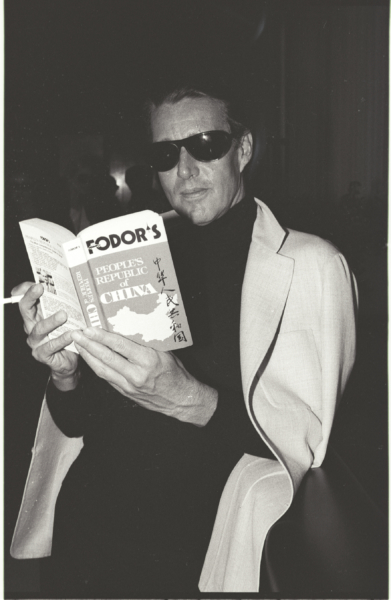
“Poor Halston. We had to eat everything people gave us to be polite. I remember one night we went to dinner in China with all the diplomats before we went to the silk factory and they served us all those thousand-year-old eggs. There were huge spaces with so much food piled up over your head at the table. Halston would keep me next to him because he didn’t really talk so much, and I had to sort of entertain the people next to me, so that he could get a break. At one point, before we got back to Paris, he turned blue in the face. He got so sick.
“We’d sometimes end up in Las Vegas, and we’d be at the pool with everyone in bikinis and Speedos. But Halston would always keep his clothes on. We would say, ‘Halston, you never take off your shoes!’ He was always ready to do business. And it’s hard to keep your personal life going when you have so much business. That’s the scary thing for artists, they lose a piece of themselves when they go into business. He was someone you could love because he knew how to be luxurious and was never a snob. He just kept things going, even though people were stabbing him in his back. One time, I remember, Halston and I rented this car, and we went out and he showed me this farm place that he lived in as a child. I don’t know what town, it was out West somewhere. All those big bales of hay and nothing around. And then we went back to the hotel. We didn’t go in the house or anything, we just went by it. It was so strange. I’d done that with Valentino, too. It’s so funny, you have a relationship with somebody and then they become an icon. But you don’t really think of them like that.
“He was such a good host and he entertained everybody and everybody always had a good time. When it was Christmas, he gave us all kinds of beautiful presents. When Elsa [Peretti] started designing jewelry, he brought jewelry for all the girls to get her set up at Tiffany’s. He loved Elsa the most, I think, out of all of the girls. He said, ‘If I ever were to marry a woman, I would marry Elsa.’ She was tall and she had that androgynous look and she spoke Italian. We’re all friends now because of him and his love for us.“

